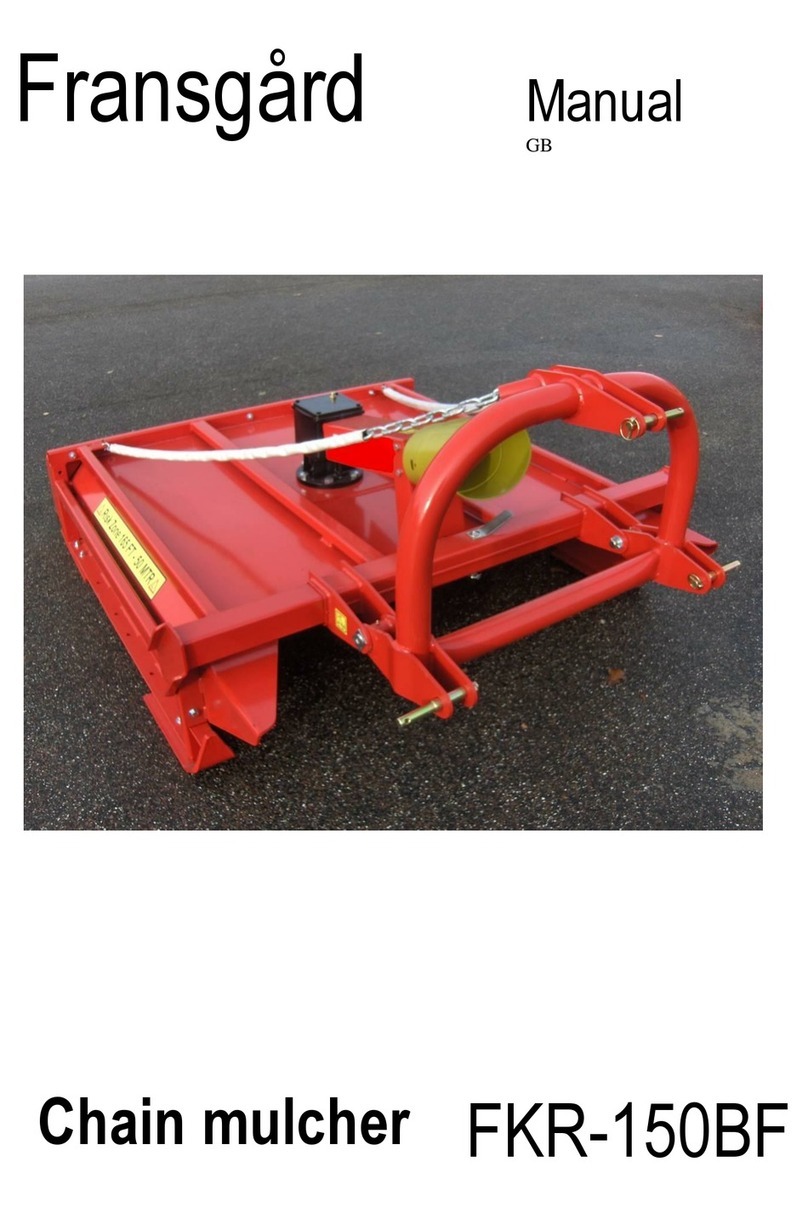5
SAFETY REGULATIONS
It is obligatory to read through the instructions for use before commissioning.
All the guards must be in place and checked before the machine is started up.
Beware of projected stones. It is the owner's / user's responsibility to ensure
that there are no people or other living things within the machine's working area
when the machine is started up; if this happens while the machine is in use, it
must be stopped immediately and the individuals moved away.
Safety distance / risk zone is a 50 m radius from the machine.
The cab must not be left unattended when the machine is in use.
The machine is designed to remove small trees, bushes and small foliage and must
not be used for anything else.
The machine must only be operated by trained individuals.
When being operated in more densely populated areas, caution should be taken with
the machine’s risk zone.
Lubrication, adjustment and setting of the machine must only be undertaken when the
latter has stopped and the power has been switched off. The key must be removed
from the tractor so that the latter cannot be started.
When driving on very dry terrain, be aware that the chains can cause sparks, with a
subsequent risk of fire, if they rub against stones or rocks.
Never drive so fast that it is impossible to stop if an obstacle arises.
Tighten bolts and check settings after every 7 hours of operation.
The machine must only be started up when the impactor head is in the lowered
and horizontal position.
Large foreign objects that may present a danger must be removed from the area where
the machine is to be used.
The rubber protection plate that sits behind the cutting head is subject to wear and tear
and must be replaced when it begin to crack or show signs of wear and no later than
every third year.
The chain and the chain case are subject to wear and tear and must be examined at
regular intervals, at least after every 7 hours of use, and then tightened.
The chain must be replaced if it has worn down to 2.0 mm below the nominal dimension
(10 mm or 13 mm chain). If the mounts that hold the chains are worn to 2.0 mm below
the nominal dimensions (10 mm), these must be replaced.
If the chain needs to be replaced, it must be ensured that it is in the right position and
is the same length on each side of the chain case; only a long chain that goes through
the chain case may be used, and the length must be adapted so that with a 10 mm
chain, the locking fork sits above the 18th link, and above the 13th link with a 13 mm
chain. It is possible to store a small additional chain inside the chain case.




























